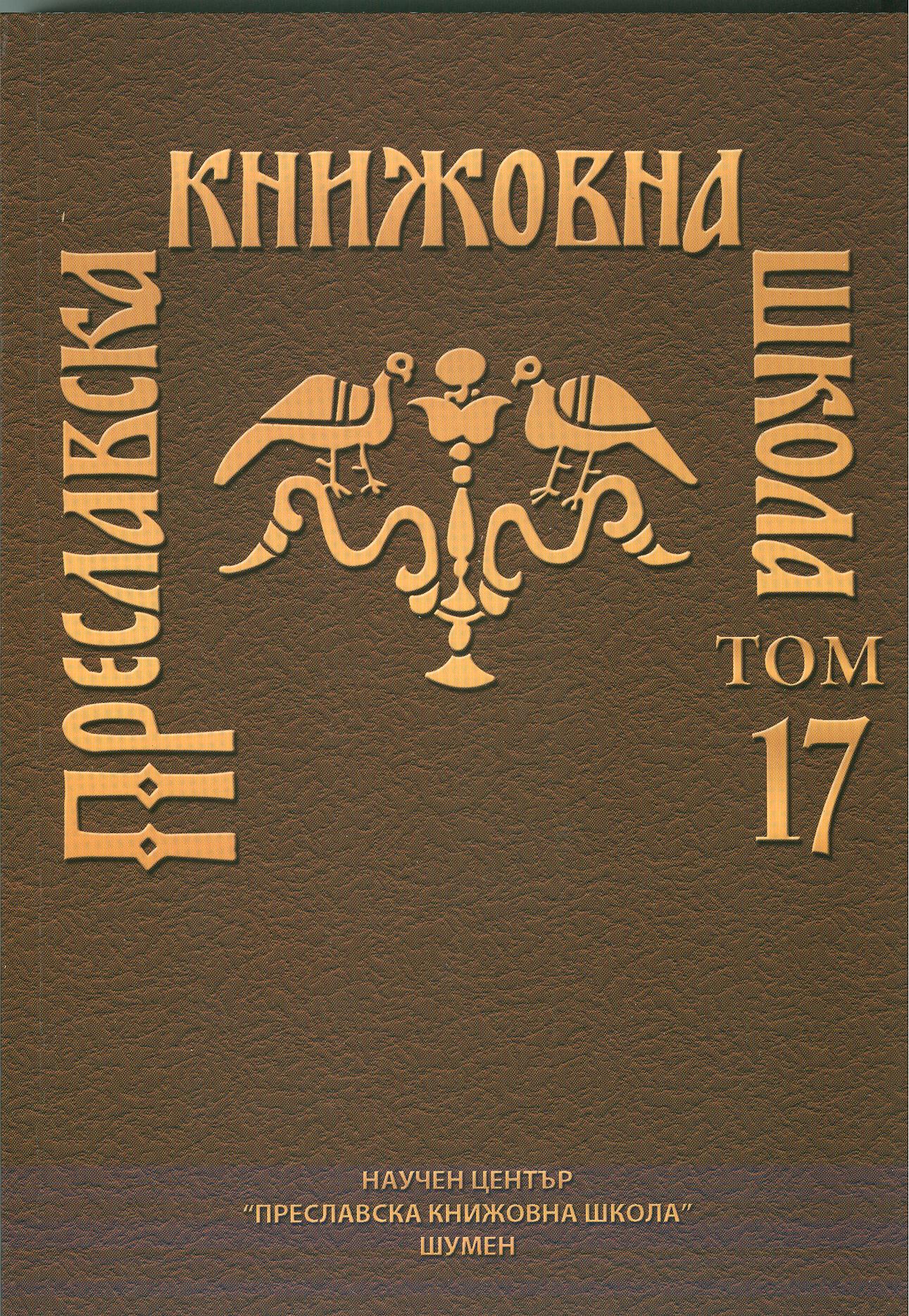ЗА ПРЕХОДА ОТ ГЛАГОЛИЦА КЪМ КИРИЛИЦА (ПО ДАННИ НА СЕДМОЛЪЧНИЯ ПЕЧАТ ОТ ПЛИСКА)
ON THE TRANSITION FROM GLAGOLIC TO CYRILIC ALPHABET
(BASED ON DATA FROM THE SEVEN-RAY-STAR SEAL FROM PLISKA)
Author(s): Zarko ŽdrakovSubject(s): History, Archaeology, Fine Arts / Performing Arts, Visual Arts, Middle Ages, 6th to 12th Centuries
Published by: Шуменски университет »Епископ Константин Преславски«
Keywords: PLISKA; GLAGOLIC ALPHABET; CYRILIC ALPHABET;
Summary/Abstract: This article is on the presentation of an aspect of the Huno-Bulgarian shepherd’s title zhupan with it’s Chinese root (turk. Cuban, coming from the Chinese tsou-pan 'chanceller' and tsou 'municipality), where among the nomads it became to mean "shepherd" (Turk. çoban) in similarity to the Hun ethnonym (Chinese hun 'shepherd’). In this connection, there is the Hun family Chuban from the Dulo family clan and their state Chuban to the north of Tian-Shan Mountain. The Slavs adopted the Zhupan title and the title pan / ban associated with it, meaning 'Mister', from their Hun masters preceding their migration in the 6th century. The Zhupan title was first witnessed in the treasure of Asparuh from Banat (Nagy Sent Miklosh) in two configurations made up from two parts each - Greek and a pseudo-runic ones. The first variation is on Plate № 20: bouila zoapan "His highness the Zhupan" (from boi 'high' and -il 'knyaz, homeland’, comp. zoupanos megasis "great Jupan) and bataul zoapan "the elder son of the Zhupan” (from bat 'Great, big brother' and aul 'son', comp. the firstborn Bat Bayan). The ruler’s seal on plates № 9 and № 10, the cups with high stems and the rhyton, testify the second variation. The letter-symbols were inspired by old pictogram signs for different objects in the spirit of the Chinese writing tradition – for example, "o" is a half-moon; the Greek „п“ is a square, the Latin "c" is refracted to as a rhyton, the initial "E" of Espererich (Khan Asparuh in the Nominalia of the Bulgarian khans) has skew horizontal hinges like a horse-tail flag. The inscription is a title in two parts of khan-jupan and has not yet been registered, elsewhere: E (spererich) can jop(a)n. The letter "zh" in "zhopan" has been used for a long period of time as an initial-symbol of the zhupan until the reign of Khan Omurtag (814 - 831) – e.g. on the hips of the lions in Pliska and Chatalar, on a stone block from the pagan temple-nympheum at Madara and on tiles. Another variant of the letter "zh", adapted by the Glagolic letter and also used separately as a sign of the zhupan, is witnessed on a sword, the stone block from Byala, the rock of the nympheum at Madara. In terms of the Glagolic prototype of the letter testifies the star-shaped seal from Pliska with the formula of the Good Shepherd (IYI + ЖУБАНЪ) of the homeland (ЕАЛѢ- from Turk. il 'district, province, country, prince' with -ѣ for the possessive case) water and military constructor – СУ ѢѰ (Turk. su 'water' and sü 'army', comp. proto-Bulgarian subegi 'millitary beg’ and Turk. yap ‘set up’ with verbal adverb -s). The inscription is composed vertically in bustrophedoneon so that the first row is being read from top to bottom and from left to right, whereas the second row is read from bottom to top and from right to left. While some Cyrillic letters have a completed character (e.g. Ъ), others are still in the process of adjustment from the Glagolitic alphabet (e.g. Ж, А, Б, Ѣ). The runographical written tradition ends up with the dethronement of Prince Vladimir Rasate (890-893).
Journal: Преславска книжовна школа
- Issue Year: 2017
- Issue No: 17
- Page Range: 332-342
- Page Count: 11
- Language: Bulgarian

